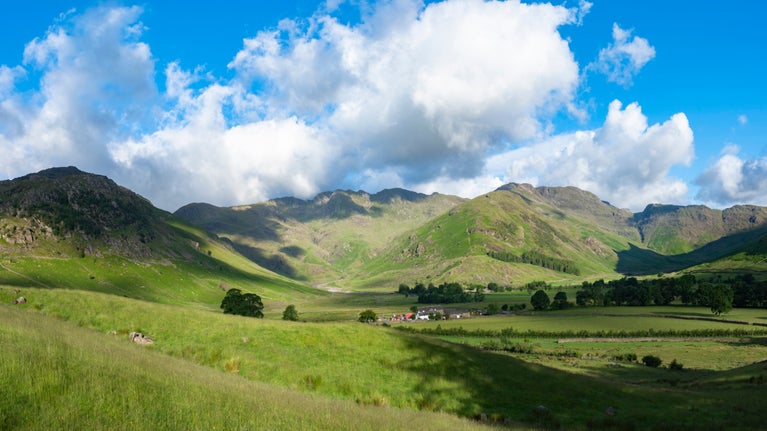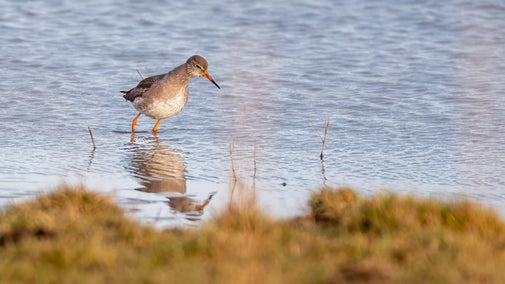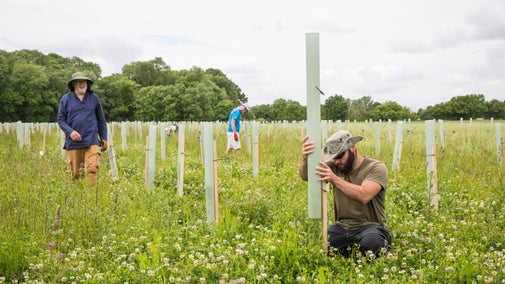
Nature conservation
From ancient trees to bees and butterflies, our places are full of life. We're working hard to safeguard nature for years to come.

Once a common sight in areas of the UK including Cornwall and Wales, the red-legged chough fell into drastic decline. We've been working hard to turn this around, bringing back traditional grazing to help recreate habitats where these characterful and historically important birds can thrive.
The chough (Pyrrhocorax pyrrhocorax) is a red-legged, red-beaked member of the crow family.
It has strong links with Cornwall, appearing on the Cornish coat of arms and in folklore surrounding the legend of King Arthur. It's also associated with Wales, where the majority of UK chough now live, and where its name, brân goesgoch, literally means red-legged crow.
Chough numbers began to decline in the later part of the 18th century. Cornwall was their final stronghold in southern England but by the mid-20th century they had disappeared altogether – the last breeding pair recorded before conservation work began was near Newquay in 1947.
At one time, the decline of the chough was blamed on ‘sportsmen’, trophy hunters and egg collectors – but in the long term it was changes in farming practices that really did the damage.
Choughs are ground feeders, picking out insects and digging for grubs in the turf with their long, curved beaks (in fact, their old Cornish name, Palores, means digger). This means they need access to open areas of short-cropped grass rich in these invertebrates.
The clifftop heathlands where choughs often nest were traditionally grazed by cattle, sheep and ponies, keeping the scrub and bracken at bay and allowing other plants, and the insects they supported, to thrive.
But as pony carts fell out of use and livestock were moved to inland fields to graze, the short turf on cliffs became densely overgrown, drastically reducing the chough’s access to food.

In the 1980s and ‘90s, generous donations to our Neptune Coastline Campaign allowed us to buy land on the Lizard peninsula in Cornwall and begin work to recreate the conditions that once made it home to choughs.
By working closely with tenant farmers and other Lizard landowners, we were able to reintroduce traditional grazing and scrub management to the clifftops and coastal fields, with sure-footed cattle breeds like Dexters and North Devons joined by moorland ponies looked after by our own National Trust rangers.
We weren’t primarily thinking about choughs when we did this – the main aim was to support the Lizard’s famous rare flowers and plants, which require the same short-cropped turf. But the results show the widespread positive impact of nurturing complex habitats like this.
In 2001, wild choughs were sighted at Lizard Point for the first time in over 50 years. Three pioneering birds had found the short, insect-rich grass they needed and decided to stay.
Two of the birds began to nest, chicks were born and thanks to a huge collective effort from local people, including all-night vigils against egg thieves, the chough family grew. It wasn’t long before the next generation were also seen carrying twigs in their beaks.
You can now spot choughs in numerous locations around Cornwall.

The limestone expanses of the Great Orme peninsula – Pen y Gogarth – in North Wales are regarded as one of the five most important botanical sites in Britain, home to rare plants and invertebrates.
The Great Orme is also another National Trust place where choughs are benefitting from proper management of the habitats they rely on.
In 2015, just weeks after launching an ambitious strategy to reverse the alarming decline in wildlife in the area, the National Trust acquired Parc Farm, near the summit of the Great Orme, along with the grazing rights for the majority of this dramatic headland.
Since then, our priority has been to put in place a specific conservation grazing regime to ensure the survival of these species and habitats. Local Llyn sheep and Lake District Herdwicks graze the rugged grassland, creating that all-important cropped turf where choughs can feed on insects and grubs.
Today, around three-quarters of the UK’s choughs are found in Wales.

From ancient trees to bees and butterflies, our places are full of life. We're working hard to safeguard nature for years to come.
Discover the best places to see choughs and top tips on how to spot them. In 2023, a record-breaking number of these coastal birds fledged from nests in Cornwall, so see if you can spot them when you next go birdwatching.

Choose from our selection of walks combining coastal or countryside scenery with the chance to see native and migrant birds all year round.

Find out how the National Trust is caring for and improving the habitats within and surrounding Parc Farm on the Great Orme.
Sitting at the tip of Britain's most southerly point is the volunteer-run wildlife watchpoint. Discover Atlantic grey seals, dolphins, basking sharks and Cornish choughs against the dramatic scenery of the Lizard. The Wildlife Watchpoint is now closed for winter & will reopen in April 2026.

Together, we're securing our future with action on climate and the environment. Learn more about how we're responding to the changing climate at places in our care.

Discover how we’re helping increase butterfly populations through habitat management and monitoring, and learn about the rare species we’re bringing back from the brink.

Find out how we're helping to ensure that these endearing animals continue to be a feature of Britain's rivers and lakes for generations to come.

Discover what we're doing to conserve and protect the plants in gardens across the country, and see some examples of the most special plants and trees.
